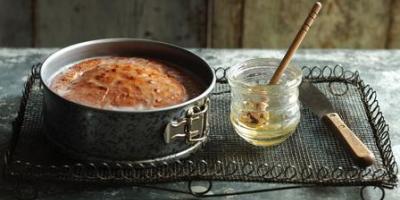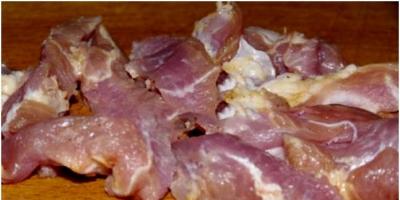IN Lately It has become very fashionable among gardeners to create mini-reservoirs in their garden plots: ponds, lakes, and other waterways. It goes without saying that in this case one cannot do without coastal aquatic vegetation, because it is the main decoration of reservoirs. There are many thousands of species of plants living in water, but not all of them are suitable for growing in water. middle lane. On this page you will learn the names of aquatic flowers and plants of the coastal zone, adapted to our conditions. You can also get acquainted with the description of aquatic plants and see their photographs.
Plants of the aquatic environment and coastal zone of water bodies
Calamus (ACORUS). Family Araceae.
Air (Image root) (A. calamus)- rhizomatous perennial 50-80 cm high with straight sword-shaped leaves. Small greenish inflorescences-cobs are not interesting.


In the variety "Variegatus" the leaves are green with yellowish stripes along the edges (they are pinkish in spring).
Growing conditions. Near water, planting depth 8-20 cm.
Reproduction. By dividing the bush (in spring).
This coastal plant is used to decorate the banks of reservoirs.
Watch (MENYANTHES). A family of shift workers.


Three-leaf watch (M. trifoliata)- a perennial with a thick, long, branched rhizome, growing in stagnant water, along the marshy banks of rivers and lakes in the temperate zone of Eurasia. Blue-green trifoliate leaves on long petioles give the plant a decorative appearance. The flowers of this coastal aquatic plant are white and pink, collected in a dense raceme.
Growing conditions. Low banks of reservoirs, shallow waters.
Reproduction. Sections of rhizomes with a renewal bud (at the end of summer). Planting density - 12 pcs. per 1 m2.
Used to decorate ponds.
Mertensia (MERTENSIA). Borage family.
Rhizomatous perennials, mainly growing along the seashores in North America and on Far East, are also found in the middle zone. The leaves are grayish-blue, lanceolate; inflorescence - a curl of bright blue flowers.
Types and varieties:


Mertensia ciliata (M. ciliata)- height 4050 cm.


Mertensia marine (M. maritima)- height 10-15 cm.


Mertensia virginiana (M. virginica)- height 40 cm.
Growing conditions. Moist, poor sandy soils in sunny locations.
Reproduction. By seeds (sowing in spring), dividing the bush (in spring). Juveniles, divide and replant in the 3rd-4th year. Planting density - 25 pcs. per 1 m2.
Sedge (CAREX). The sedge family.
Perennial rhizomatous herbs with dense, narrow, like cereal, leaves and thin spikelets. Numerous species are widely distributed throughout the world, but only a few are used as ornamental plants.
Types and varieties:


Sedge Buchanana(C. buchananii)- 60 cm high, brownish leaves.


Sedge Morrow (C. morrowii), variety "Variegata" - height 50 cm.


rusty spotted (C. siderosticta) And hairy (C. pillosa)- forest sedges.


drooping sedge (C. pendula)- up to 100 cm high, semi-aquatic.
Growing conditions. This coastal plant of water bodies is planted in areas with any soil and sufficient moisture. Forest sedge species prefer shady areas.
Reproduction. By seeds (sowing in spring) and dividing the bush (late summer). Planting density - 9-12 pcs. per 1 m2.
Cattail (TYPHA). Cattail family.
This is coastal aquatic vegetation with a creeping thick rhizome, 100-200 cm high. The leaves are broadly linear at the base of the stem. These are plants that grow near water along the banks of rivers and other bodies of water in the temperate zone of Eurasia, often forming thickets.
Types and varieties:


Broadleaf cattail (T. latijoiia)— height 100-150 cm; Cattail angustifolia (T. angustifolia)-height 100-150 cm.
Growing conditions. Wet shores of reservoirs.
Reproduction. By dividing the bush (in spring and late summer).
Huttinia (HOUTTUYNIA). Family Saururidae.
Huttinia cordate(H. cordata)— A new plant for central Russia, but it is worthy of the difficulties associated with its cultivation. The species itself, which came into cultivation from the coastal meadows of the south of the Far East, is rarely grown.


Varieties of interest:"Chameleon" - with leaves along the edges of which white, yellow, red spots are scattered, and "Plena" - with double flowers.
The plant is creeping, quickly forms a thicket 20-50 cm high. It blooms rarely and not abundantly in central Russia.
Growing conditions. Semi-shaded banks of reservoirs with clay soils.
Reproduction. In spring, a piece of rhizome with a renewal bud. Planting density - 16 pcs. per 1 m2.
Waterfoil (HYDROPHYLLUM). Waterfolia family.
Long-rhizome perennials from humid forests and meadows of the east North America with large lobed leaves and a fluffy branched inflorescence of pink-purple flowers. Adapted to Russian conditions, where it is planted along the banks of reservoirs.
Types and varieties:


Canadian waterfoil (H. canadense)- leaf rounded-lobed; Virginia waterfoil (H. virginianum) has an elongated lobed leaf.
Growing conditions. This coastal plant prefers semi-shaded to shady locations with moist, rich soils.
Reproduction. Sections of rhizomes with a renewal bud at the end of summer. Planting density - 16 pcs. per 1 m2.
Spleen (CHRYSOSPLENIUM). Saxifraga family.


Spleenwort alternate-leaved (Ch. alternifolium)- perennial with a fleshy stem, height 5-15 cm, leaves in the basal rosette are light green, thickened, rounded-beam-shaped; the inflorescence is flat, corymbose, the flowers are golden-green. They form thickets in damp, shady places.
Growing conditions. Semi-shaded places near reservoirs, in depressions of the relief.
Reproduction. By seeds (sowing in autumn), dividing the bush (in summer). It grows weed on wet soils. Planting density - 36 pcs. per 1 m2.
Use only in areas that imitate natural thickets. Unstable decorative, good only in early spring.
Coastal aquatic vegetation: plants living in water and on the shore
This section presents photos of aquatic plants with names and descriptions, suitable for growing in shallow waters of fresh water bodies and along their banks.
Whitewing (CALLA). Family Araceae.


Swamp whitewing (C. palustris)- a rhizomatous perennial that grows along the banks of reservoirs in temperate zone Northern Hemisphere. Leaves are basal on long petioles, heart-shaped, rounded. The flowers are collected in an inflorescence-cob, covered with a white ovoid veil.
Growing conditions. This light- and moisture-loving plant is grown both in shallow waters of fresh water bodies and along their banks.
Reproduction. Propagated by seeds, sowing in wet soil immediately after collection. It is best to divide the rhizomes at the end of summer. Planting density - 7 pcs. per 1 m2.


Look at the photo: This aquatic plant provides an early spring effect as part of mixed groups with summer-flowering plants; interesting in rock gardens, in flower beds, where annuals are then planted.
Sitnik (JUNCUS). Sitnikov family.
Perennial rhizomatous moisture-loving herbs. The leaves are grass-like, decorative capitate or paniculate inflorescences.
Types and varieties. S. acutiflorus (J. acutiflorus) - up to 100 cm high, paniculate inflorescence; With. spreading (J. effusus) - up to 150 cm high, inflorescence fascicle-paniculate; With. xiphoid (J. ensifolius) - 20-30 cm high, inflorescence capitate, dark brown; With. glaucous (J. glaucus) - 60-90 cm high, bluish leaves.
Growing conditions. Sunny shores of reservoirs at a depth of 0-5 cm.
Reproduction. Rhizome sections in spring or late summer.
Buttercup (RANUNCULUS). Ranunculaceae family.
A large genus, the species of which are widely found everywhere, but only a few of the most decorative perennials are used in culture. Among them there are also aquatic plants, but more often buttercups grow on the shores of reservoirs.
Types and varieties:


Aquatic and semi-aquatic: L. caustic (R. acris), variety “Multiplex” height 50-70 cm, water depth 0-10 cm.


Water buttercup(R. aquatilis)— water depth 40-100 cm; l. longifolia(R. lingua)- depth 0-20 cm, variety Grandiflora.”


Buttercup cappadocian (R. cappadocicus)- from the forests of the Caucasus, consistently decorative, forms thickets.
Growing conditions. Aquatic - in reservoirs with standing water and in shallow water; l. Cappadocian - in the shade.
Reproduction. By dividing the bush (in spring). Planting density - 25 pcs. per 1 m2.
Full (CYPERUS). The sedge family.


Galingale (C. longus)- a long-rhizome perennial that grows along the banks and in shallow waters (depth up to 20 cm) of standing and slowly flowing waters. If we talk about which aquatic plants are most common in central Russia, then the seaweed is mentioned most often. Its tall (60-120 cm) leafy stem rises above the water, bearing an openwork umbrella with long (10-40 cm) “rays” carrying a bunch of small brownish spikelets. Consistently decorative. Forms loose thickets.
Growing conditions. Reservoirs.
Reproduction. Sections of rhizomes with a renewal bud (at the end of summer).
Reed (PHRAGMITES). Poa family (grasses).


Common reed (P. communis)- long-rhizome tall grass(150-200 cm), forming thickets along the banks and shallow waters of reservoirs.
Growing conditions. Sunny and semi-shaded areas with wet soils, low banks of reservoirs. This coastal plant can also be grown in shallow water.
Reproduction. Sections of rhizomes with a renewal bud (spring, late summer). Planting density - 5 pcs. per 1 m2.
Perennial aquatic flowers and ornamental herbaceous plants
Aquatic flowers and plants are a real decoration of ponds. But herbaceous aquatic plants are no less interesting, attracting attention with their rich greenery.
Arrow leaf (SAGITTARIA). Chastukhov family.
These are aquatic flowers, which are rhizomatous perennials, rooted at a depth of 10-50 cm. The leaves are dark green, shiny, dense. Flowers in inflorescence are a sparse raceme.
Types and varieties:


Arrowhead Broadleaf(S. LatifoLia)- height 50-70 cm, flowers with a yellow center; arrowhead arrowhead (S. sagittifoLia) - height 30-50 cm, flowers with a red center.
Growing conditions. Planting in reservoirs with standing or slowly flowing water to a depth of 10-50 cm.
Reproduction. By seeds (sowing in spring in containers and then planting in water).
Chastukha (ALISMA). Chastukha family.
A perennial aquatic plant with beautiful ribbed leaves on long petioles. They bloom all summer. The flowers are small, with three petals, arranged in whorls.
Types and varieties:


Chastukha plantain (A. plantagoaquatica)- pink flowers; small-flowered chastuha (A. parviflora) - white flowers.
Growing conditions. These plants live in an aquatic environment in the shallow waters of natural reservoirs. Planting depth 5-10 cm.
Reproduction. By dividing the bush (summer) or seeds (spring).
Wetland plants growing near water
Marigold (CALTHA). Ranunculaceae family.


Marsh marigold(C. palustris)– a perennial wetland plant with a short rhizome. The basal leaves are entire, round, bright green, shiny. The flowers are bright yellow, as if varnished. Abundant seed production in July-August. More often in gardens, the double form of this species is grown - marsh marigold "Multiplex".
Growing conditions. Sunny places with clay soils that retain water well.
Reproduction. By dividing the bush at the end of summer. The bush grows slowly, so division is carried out after 6-7 years. It is propagated by freshly collected seeds; they germinate the following spring, but the seedlings bloom in the 5-6th year. Planting density - 9 pcs. per 1 m2.
An excellent plant for decorating the banks of reservoirs and in flower beds like " natural garden", simulating wet meadows. Here marigold is planted together with loosestrife, drooping sedge, knotweed, crayfish, etc.
Reed (SCIRPUS). The sedge family.


Bulrush (S. lacustris)- a perennial with a thick creeping rhizome 100-120 cm high, growing along the banks of reservoirs in Europe and North America. The inflorescence is paniculate, the leaves are subulate.
Growing conditions. Wet, low places along the banks of reservoirs.
Reproduction. By dividing the bush (in spring and late summer), by seeds (sowing before winter).
Swamp flower (NYMPHOIDES). A family of shift workers.


Marsh-leaved herb(N. peltata)- an aquatic perennial with a rhizome, rounded shiny leaves on long petioles and numerous flowers emerging from the leaf axil. The name of this aquatic plant speaks for itself - it prefers exclusively marshy areas.
Growing conditions. Reservoirs with standing or slowly flowing water, depth 20-100 cm.
Reproduction. By seeds (into the ground under water), by dividing the bush.
Used when decorating reservoirs.
Floating aquatic flowering and herbaceous plants
Watercolor (HYDROCHARIS). Family of watercolors.


Common watercolor (H. morsusranae)- a floating aquatic plant of standing or slowly flowing waters with developed shoots and rounded dense dark green leaves in rosettes on long petioles and white 15-30 cm, flowering all summer.
Growing conditions. Aquatic plant.
Reproduction. Seeds, rosettes of leaves.
Used in ponds.
Water chestnut (TRAPA). Water chestnut family.


Common water chestnut (T. natans)- annual aquatic herbaceous plants growing in slowly flowing waters. There are thread-like submerged leaves and a beautiful rosette of floating leaves.
Growing conditions. Reservoirs.
Reproduction. Place seeds (nuts) on the bottom of the reservoir in the fall.
Used to decorate natural reservoirs.
Egg pod (NUPHAR). The water lily family.


Yellow egg capsule(N. iutea)– perennial aquatic flowering plant with a fleshy underwater rhizome and wide, dense, leathery leaves above the water. A large waxy flower appears above them in June. The name of these aquatic flowers is quite justified - the flower really resembles a water capsule. Widely distributed in natural reservoirs of the temperate zone.
Growing conditions. Ponds, lakes with standing or slowly flowing water, at a depth of 30-80 cm.
Reproduction. Seeds (sow freshly harvested), sections of rhizome with renewal bud (at the end of summer). Planting density - 12 pcs. per 1 m2.
Waterlily (NYMPHAEA). The water lily family.
The genus includes about 30 species of aquatic plants growing in water bodies of temperate and tropical zones.
Types and varieties. In the reservoirs of central Russia, white plant (N. alba) grows - a rhizomatous perennial with round, unequal leaves on long petioles floating on the surface of the water. The leaves are green above, reddish below.


Look at the photo of these aquatic flowers - they are all large, mostly white. They have a pronounced aroma.
Numerous varieties available k. hybrid (N. xhybrida):


"Gladstoniana", "Fire Opal"


"Hollandia", "Rose Arey" and etc.
Growing conditions. These aquatic flowering plants prefer ponds with standing or slowly flowing water and grow at a depth of 30-100 cm.
Reproduction. Seeds (in the fall to the bottom of the reservoir), sections of rhizomes with a renewal bud (at the end of summer in the soil of the reservoir). Planting density - 12 pcs. per 1 m2.
These ornamental aquatic plants are used to decorate ponds.
Aquatic plants of the coastal zone of the pond, growing in the water and on the shore
Susak (BUTOMUS). Susakov family.


Susak umbrella (B. umbellatus)- grows in water bodies of Europe and Asia. Height 60-100 cm. This is a common aquatic plant of ponds and lakes (bodies of standing water) with long linear-triangular leaves and a large terminal umbrella-shaped inflorescence of large pink flowers.
Growing conditions. This is a plant that grows both in water and on the shore.
Reproduction. Cuttings of rhizomes in spring and late summer.
Mannik (GLYCERIA). Poa family.


Mannik is the largest (G. maxima)- a tall (70-100 cm) perennial with a long creeping rhizome, forms thickets in coastal waters at a depth of 0-10 cm. The leaves are wide, with white stripes, blooms in July-August. The panicle is spreading. Manna is a plant that grows in the water of ponds and lakes, as well as in water meadows and near streams.
Growing conditions. Sunny and semi-shaded shores of reservoirs. It is also possible to plant lengthwise at a depth of up to 10 cm.
Reproduction. This plant of the coastal zone of the pond and shallow waters reproduces by cuttings of rhizomes with a renewal bud at the end of summer.
Perennial herbaceous plant. It grows in gardens, near homes, along river banks, in ravines, in wastelands, forming dense thickets. Height cm. Blooms from mid-June to late autumn. The rhizome is creeping. The seeds ripen in August-September. Propagated by seeds and rhizomes. The leaves contain a lot of iron and potassium salts, contain vitamins C, A, B, K, carotene, mineral salts and organic acids.


This herb is used by people in different ways. For a long time, threads, ropes, fishing nets and made durable fabrics. In the 19th century, Europeans strained honey and sifted flour through a nettle sieve. IN folk medicine water infusion and nettle decoction are used for liver diseases and biliary tract, kidney stones and many other diseases. Nettle infusion is also used as an internal “blood purifier” that improves blood composition in the treatment of various skin diseases. Our ancestors used nettles magical rites. They thought that evil spirits were afraid of her. Ancestors laid nettle rugs in their houses. The rugs protected them from uninvited, evil guests..

Nettle increases milk yield in cattle, as well as egg production in geese and chickens. They are fed all winter with a mixture of dry tops of this grass and oats - then the eggs will be in the house all year round. Nettle is also used to preserve the freshness of animal products when there is either no refrigerator or it has spoiled, and the heat outside is over thirty. In this case, meat or fish is covered with nettles on all sides, changing it from time to time. Currently, nettle is successfully used in medicine and cooking - it is included in many pharmaceutical preparations, and hundreds of delicious dishes are made from it.


Why do nettles sting? In India and on some tropical islands of the Indian Ocean, such a nettle grows, the burn of which is as dangerous as its bite. poisonous snake. What does nettle sting and sting? After all, it doesn’t seem to have sharp thorns. Eat! Only they are so small that they are barely visible. The stem and leaves of nettle are covered with thin fibers. When a person touches a leaf, a hair pierces the skin, the upper part of the hair breaks off, and the contents of the stinging cell enter the wound. Some are harder and have a sac of liquid at the root that contains acid and irritates our skin when it leaks out. The acid penetrates the skin and causes itching and pain. If you break off the nettle very firmly, these fibers will break at the base and their ends will not be able to penetrate the skin, that is, there will be no irritation.

Nettle is a favorite delicacy and livelihood of some species of butterflies. Nettle needles contain formic acid, which burns when it comes into contact with the skin. In Japan, the strongest sails were made from nettle fabric. The annual “Nettle Festival” has been held since 2002 in the village of Krapivna, Beijing district, Tula region. The nettle eating championship has been held annually in the village of Marshwood in England for more than 20 years, ever since two visitors to a local shop bet on who could eat the most stinging leaves.


The variety of herbaceous plants growing on Earth is amazing. Some of them bloom with beautiful flowers or have decorative leaves, others are edible, and others have medicinal properties and can cure all ailments. Description of some types of herbs, their appearance and beneficial properties our article is dedicated to.
Looks great in flower beds!Annual herbaceous plants die off completely at the end of the growing season. With the onset of favorable weather conditions, they grow again from seeds, managing to form a stem with leaves, bloom and produce seeds in one year.
Lipstick, gatsaniya and marigolds with beautiful flowers are grown in flower beds as ornamental plants. Flax and rapeseed are of great economic importance, and string is a valuable medicinal plant.
Tiger lipstick
The lipstick belongs to the Frimaceae family. It grows in temperate regions everywhere except Europe. The Latin name of the plant, mimulus, means “comedian” or “jester.” The flower received this name for its unusual corolla shape and variegated, spotted color.
 An original and long-flowering plant.
An original and long-flowering plant. Various types of mimulus are grown in flower beds, such as ground cover plants. Interesting varieties with characteristic flower colors have been developed, for example, tiger lip.
Many people admire the tiger variety for its variegated flowers.
- It grows short, up to 35 cm.
- It can be grown from seeds in a flower bed and in an indoor pot.
- Mimulus flowers exude a delicate, pleasant aroma.
- During flowering, which lasts from June to September, it is covered with gramophone flowers.
It can be propagated by cuttings, like petunia, to save your favorite varieties for next year. The flower does not overwinter in open ground and although it is a perennial, it is grown as annual plant. Unlike petunia, it is undemanding to light.
Gatsania is harsh
Gazania is a herbaceous plant of the Asteraceae family, native to Africa. It is grown in flower beds as an ornamental plant due to its large flowers with bright colors - yellow, orange, red, white, brown or variegated. The plant loves the sun and easily tolerates lack of watering and poor soil.
 Gatsaniya is known and loved all over the world.
Gatsaniya is known and loved all over the world. Gatsania does not tolerate frost, so it does not overwinter in the flowerbed. When frost sets in, you can dig up a flower and bring it into the house, and plant it in the garden again in the spring. But it is easier to grow it as an annual, sowing the seeds every spring.
Marigold
This is an annual or perennial herbaceous plant, the genus of which includes about 50 species. The homeland of marigolds is America, the Latin name Tagetes was given to it by Charles Lineaeus in honor of Tagites, the grandson of the God Jupiter. Hybrid varieties Marigolds are grown in central Russia in flower beds. These flowers are loved by gardeners for their cheerful, orange or yellow color, abundant flowering and ease of care.
 Marigold flowers – unpretentious plants.
Marigold flowers – unpretentious plants. The following types of marigolds are widespread:
- small-flowered;
- anise;
- erect;
- thin-leaved, or Mexican.
Marigolds bloom from June until frost and go well with many flowers in the flowerbed.
The height of the plant is from 20 to 120 cm. But the flowers differ not only in the height of the bush, but also in the shape of the inflorescences, which can be double, semi-double, carnation, chrysanthemum or simple. The leaves are most often pinnately divided or pinnately dissected.
Linen
Annual flax is a delicate blue or lilac flower with graceful stems native to the eastern Mediterranean.
 Flax develops better on fertile soil.
Flax develops better on fertile soil. Flax flowering is spectacular and unusual. Its flowers bloom for one day.
People have been growing this plant since time immemorial. Its seeds are used in medicinal purposes, and the stems are used to make yarn. Some varieties are planted as decorative flowers in a flower bed.
Flax is a sun-loving plant and does not tolerate shade. It is advisable to set aside a separate flower garden for it, since the plant easily propagates by self-sowing and grows, occupying a large space. Flax seeds are planted in a flowerbed in March, but it is impossible to grow flax through seedlings - its roots are fragile. Therefore, the seeds are planted immediately in open ground.
Spring and winter rape
Rapeseed is a good honey plant, which is why it is often sown next to apiaries. It belongs to the Brassica family. This brightly blooming yellow ok in May. But the main value of rapeseed is not in its flowers - it is used as a valuable oilseed crop for food and industrial purposes, and is used as livestock feed. Oil is made from the seeds.
 This variety is less demanding on soil and sowing lines.
This variety is less demanding on soil and sowing lines. There are two varieties of the plant - spring and winter. The latter does not tolerate drought and severe frosts, but is a good forage crop and honey plant.
Tripartite sequence
Chereda is a medicinal plant that has been grown in Russia for a long time. The genus belongs to the Asteraceae family. The warm and moisture-loving plant grows in nature along the banks of reservoirs and in fields, and gets into gardens as a weed. This herb is used to treat gastrointestinal diseases, dysentery, and purulent wounds.
 A plant known to all healers and gardeners.
A plant known to all healers and gardeners. In central Russia, the tripartite series is widespread, which is so called because its leaf is divided into three lobes. Only this type of plant is used in medicine.
Tripartite succession is an annual plant, its height is from 30 cm to 1 meter, the seeds are small, with two horns. In Russia, before the revolution, the plant was harvested on an industrial scale, and it is still cultivated today. In pharmacies you can buy infusion and briquettes of herbs.
Biennials for open ground
Herbaceous biennials live for two years. In the first year, the main vegetative organs are formed - the root and stem with leaves. And in the second year - generative, a peduncle and seeds appear. Unlike perennials, biennials do not have modified underground shoots - bulbs, rhizomes and tubers.
Biennials include most garden root crops, as well as valuable medicinal plants - speckled hemlock, marsh thistle, blue cornflower, motherwort.
Hemlock
Speckled hemlock is a tall herbaceous plant with white umbellate flowers from the Apiaceae family. When collecting medicinal raw materials, it is important to distinguish hemlock from other similar plants. When you pick hemlock leaves or flowers and rub them in your hands, they smell like a mouse's nest. Red droplets, similar to droplets of blood, are visible on the trunk.
 Speckled hemlock is a member of the Apiaceae family.
Speckled hemlock is a member of the Apiaceae family. In nature, grass grows in flooded meadows and forest edges. It is most often found in gardens as a weed, but can also be used for medicinal purposes.
Hemlock is used to treat various ailments - to fight cancer, seizures and spasms.
The patch and extract are used as an external pain reliever.
Bog thistle
Thistle – two-year-old or perennial from the Asteraceae family, in which more than 400 species are known. This grass grows in meadows and fields and is considered a weed because it penetrates into crops. Some types of thistle are used in folk medicine and are grown as ornamental and vegetable crops. Its inflorescences are round baskets with tubular flowers of crimson or purple color. This plant is a good honey plant.
 Prefers moist soil.
Prefers moist soil. - Bog thistle has a spiny stem and spiny leaves.
- Plant height is from 50 cm to 2 meters.
- The leaves are pinnately dissected on short petioles, with spines along the edge and pubescence on top.
- It blooms with purple, less often white flowers.
The plant loves moist soil and grows in Siberia and the European part of the continent in swampy forests and river valleys.
Cornflower blue
Blue cornflower from the Asteraceae family is an excellent honey plant and a valuable medicinal plant. Bees make thick honey with a pleasant almond smell from the nectar of its flowers. Blue cornflower grows in nature in the Caucasus, Siberia, Central Asia and the European part of Russia.
 Blue cornflower is a medicinal plant.
Blue cornflower is a medicinal plant. The petals of its flowers are used for medicinal purposes as a choleretic and diuretic.
Cornflower decoctions are used for coughs, nervous and stomach diseases, and lotions are made with them to treat eczema and ulcers.
This unpretentious flower grown as ornamental plant in the flowerbed. It can be sown with seeds directly into open ground. Cultivated varieties bloom not only with blue, but also with white, pink, and burgundy flowers from June to September.
Motherwort varifolia
This herbaceous plant from the Lamiaceae family prefers clay-sandy soils rich in nitrogen. It has a taproot and green stems with a reddish-purple tint, ranging in height from 50 cm to 1 meter. Purple small flowers are collected in the axils of the upper leaves, forming a spike-shaped inflorescence. The plant blooms in June or July. In Russia it is found in the Far East and Eastern Siberia.
 Motherwort - excellent remedy for headaches.
Motherwort - excellent remedy for headaches. The stems, leaves and flowers of motherwort are used for medicinal purposes. An alcoholic tincture of the plant can be purchased at a pharmacy. It is used as a sedative for nervous diseases, and also as an antispasmodic for spastic pain, cough and convulsions.
Perennial herbaceous plants
U perennial herbs aboveground shoots die off at the end of each growing season and in winter, plants in open ground are dormant.
In spring, they begin to grow again from renewal buds on underground modified shoots. Among the perennials there are many ornamental and medicinal plants.
River gravity
The genus Gravilat from the Rosaceae family includes about 50 species that are found in the northern and southern hemispheres of the Earth. There are 7 types of gravilate growing on the territory of Russia, one of them is river gravilate. It can be found in moist, rich soils along the banks of streams and swamps.
 River Gravilate is a remedy for fever and neurosis.
River Gravilate is a remedy for fever and neurosis. - This is a perennial herbaceous plant up to 80 cm high.
- Its stem is weakly branched in the upper part.
- The stems of the gravilate are densely covered with hairs.
- It has two types of leaves - stem and basal.
- The plant's bell-shaped, drooping flowers are unusual. Their petals are very small and inconspicuous, and the bright sepals are colored reddish-brown.
Gravilata seeds are formed after flowers self-pollinate in July or August. The leaves, flowers and rhizomes of plants are used for medicinal purposes.
They have an astringent, hemostatic, restorative, analgesic, wound-healing and diaphoretic effect. This plant is recognized by official medicine.
Gaillardia grandiflora
Gaillardia is a perennial or annual plant for open ground, creating a compact bush with numerous flowers. Belongs to the Aster family, its homeland is North and South America. In total, there are 24 species of gaillardia in nature. Gaillardia grandiflora is especially good for open ground.
 The fiery sunny chamomile will decorate any flower garden.
The fiery sunny chamomile will decorate any flower garden. In the flowerbed it is propagated by seeds or by dividing the bush. The flowers have an orange center and yellow petals at the ends. They look very sunny and bright, and bloom throughout warm season. The plant is drought-resistant and unpretentious in care.
Goose onion
This herbaceous bulbous plant from the Liliaceae family grows in Europe, Asia and North Africa.
 Primrose plant.
Primrose plant. - Inflorescences goose onions umbrella-shaped.
- The star-shaped flowers are yellow in color and consist of six petals arranged in two circles.
- After flowering, the aboveground part of the plant dies off.
Goose onions are used in folk medicine and can be consumed boiled. The plant reproduces with the help of bulbs, which are sometimes formed in place of buds, in the axils of leaves or on the bottom of the bulb.
Basilisk
Basil is used in ornamental gardening and folk medicine. There are more than 150 species of this plant. They are perennial and belong to the Ranunculaceae genus. According to legend, the herb got its name from the healer Vasilisa, who used it to heal the wounds of soldiers.
 Many beauty lovers are attracted by its resistance to frost and ease of planting and care.
Many beauty lovers are attracted by its resistance to frost and ease of planting and care. In folk medicine, basil leaves are used to treat skin diseases.
The height of the plant can be from 5 cm to 2.5 m. The smallest Alpine cornflower grows in the tundra and alpine meadows. Flower colors can be very diverse - pink, white, yellow or purple. They are collected in dense, sometimes loose, inflorescences - a panicle or brush.
Wolf's bast or wolfberry grown as ornamental plants in gardens, creating hedges from bushes. There is an interesting garden form that blooms in November with purple flowers.
Traditional healers use the bark and berries of the plant as an external remedy.
In traditional medicine, the use of the plant is prohibited, as it is very poisonous.
Horny weed grandiflora
Horny goat weed, besvetnik, or Epimedium, belongs to the Barberry family. These are perennial herbs with creeping rhizomes and bright flowers. Many decorative plants have been developed garden forms, which are grown in shady flower beds. Plants love moist, fertile soil.
 A plant with small delicate flowers unusual shape.
A plant with small delicate flowers unusual shape. Most species bloom in the spring, but some continue to bloom throughout the summer. There are decorative deciduous, evergreen, large-flowered and other varieties. Horny goat weed grandiflora is grown as a perennial ornamental plant in a flower bed. It is used in Chinese folk medicine to increase male potency. This perennial plant from the Buttercup family grows naturally in Altai, Siberia, Central Asia and Mongolia. Plant height is about 50 cm to 2 meters. Purple flowers collected in multi-flowered racemes.
The entire plant is used for medicinal purposes. Whitemouth aconite is harvested during fruiting and dried.
Tender anemone
This beautiful ornamental plant from the Ranunculaceae family has been cultivated since the 19th century.
 The plant has flowers of lilac and blue tones.
The plant has flowers of lilac and blue tones. Varieties with different flower colors have been developed:
- Pink Star – pale pink;
- Purple Star – pale purple;
- Radar – dark red with a white center;
- Blue shades - blue.
Tender anemone prefers well-drained soils, loves partial shade, and is suitable for growing in shady beds between trees. In nature, the species is listed in the Red Book.
There are thousands of rivers, lakes and swamps all over the world, the vegetation of which is impressive in its diversity. Moreover, some plants can exist not only above the surface of the water, but also below it. All plants of freshwater bodies of water are unique, but despite the fact that most of them still tend to grow in certain types of bodies of water, there are also varieties that feel great in any fresh water.
An example is the common trefoil, which is valuable medicinal plant. Its petioles begin to grow directly from the root, with each of them crowned by three large leaves. At the same time, there are no leaves on the stem itself, but its top is crowned with a cluster of small pale pink, almost white flowers, reminiscent of stars in their shape.
The most common plants in freshwater bodies
Plants of fresh water bodies, the names of which are indicated in this article, grow almost everywhere, but have many individual characteristics. As an example, we can cite plants that can be seen almost everywhere where there is fresh water - these are reeds, cattails and reeds.
They like to grow in thickets and have many similar features, due to which they are often confused with each other, although they belong to different families. First of all, these are the stems, which in these plants are tall and straight. In some cases they can even reach 6-9 meters, but this is where their similarity ends. In reeds there are practically no leaves on the stem; in cattails, the leaves begin to twist in a helical manner from the base. In addition, the cattail ear is long and velvety, unlike reeds, which are characterized by a fluffy panicle.
Practical benefits
Plants such as reeds, cattails and reeds are characterized by accelerated growth, due to which their number increases so much that they completely occupy large areas of water, gradually emptying them. Largely due to the fact that people from ancient times have adapted plants from fresh water bodies for various economic needs, in particular, for covering roofs, weaving baskets, bags, mats and even ropes, sources fresh water practically never dry out. The remaining plants simply do not have time to absorb all the moisture and dry up the source.
swampy area
In order to find out which fresh water plants are typical for your area, just carefully study the sources closest to you. For example, the most widespread in swampy areas is that there are more than 1000 various types Worldwide. Nevertheless, the structure of each of them contains similar features, among which is a triangular stem with a dense structure, while long, grooved leaves, pointed towards the end, extend from each face. A similar leaf structure can be observed in most cereal crops.

The second most common plant and the most similar in appearance to sedge is the rush plant. It also grows in swamps, but this grass, unlike sedge, is characterized by a round shape. In addition, due to the fact that the stem of the rush is thinner and branched, the leaves, while maintaining a similar structure, are still much narrower than those of the sedge and, Seeing these two plants side by side, it will be quite difficult to confuse them in the future.
Rivers and lakes
Plants of fresh water bodies, which are characteristic of river and lake areas, are primarily noticeable on the banks. First of all, this is typical for iris flowers, which are similar in appearance to ordinary flowers. garden iris. In addition to them, the no less common weeping grass can grow in the coastal zone, whose purple inflorescences, reminiscent of a spike, immediately catch the eye. Its leaves are similar to willow leaves, but they are characterized by special slots, thanks to which excess moisture that the plant absorbs is easily drained out.
Poisonous representatives
However, it is worth considering that not all plants of fresh water bodies are harmless, because among them there are also poisonous representatives, among which the most common are chastuha and arrowhead. Moreover, the appearance of their leaves is directly related to their habitat. If these plants grow immersed in water, the leaves will resemble ribbons in their shape. If they are located on the surface of the water, they are held on it using an underwater petiole and a special floating plate. In addition, being on the surface, the leaves of the arrowhead take on the shape of arrows and begin to fully live up to their name. Unlike chastuha, which is completely poisonous, people have adapted arrowhead tubers for food.

Plants of freshwater bodies of water, characteristic of swampy areas, are buttercups, which also differ in that they can be either floating or located under water. Moreover, despite the fact that they can also be found in other freshwater sources, all buttercups, without exception, are poisonous plants. The most dangerous to humans are:
- poisonous buttercup;
- buttercup pimple - forms abscesses on the skin.
In addition, in the category poisonous plants, which are found in freshwater bodies, can be attributed to one of the most poisonous plants of modern flora - hemlock, which grows exclusively in marshy areas.
The beauty of freshwater plants
Plants of fresh water bodies, photos of which can be seen in this article, continue to amaze with their beauty. For example, having seen it in a pond, few people will remain indifferent to its grace. Her flowers are big and large.

Opening at sunrise, they close only at sunset. Among the people, the water lily received several names at once, among which the most famous remain White Lily and water rose. Its leaves, located above the water, are large and large. They are characterized by the presence large quantity air cavities, but its underwater leaves look like ribbons. Often in freshwater bodies of water you can find an equally beautiful yellow water lily.
Plants and animals of fresh water bodies are unique and require constant protection. Thanks to constantly changing climatic conditions, some of them are on the verge of extinction, while the rest have significantly reduced their population. The only exception is the amphibious buckwheat, which, when the reservoir dries out, sheds aquatic leaves and grows new ones, characteristic of a land plant.
However, in contrast to the amphibious buckwheat, we can give the example of pondweed, which grows exclusively at great depths and is a favorite place for laying eggs by most fish. It is imported into some imported farms specifically in order to significantly increase the fish population.

A person should try with all his might to maintain the ecological situation of freshwater bodies of water, reducing harmful emissions not only into water sources, but also into the atmosphere, and also, if possible, reduce the population various plants, reducing the moisture content in reservoirs and ultimately leading to their complete drying.
AIR, IR
(?). A marsh plant from the araceae family, native to Asia, its rhizome, under the name “iry root”, is used in medicine.
Dictionary of foreign words included in the Russian language. - Chudinov A.N., 1910 .
(Turk. genus of perennial herbaceous plants family. aroids, growing along the banks of rivers and lakes; rhizome (irium root) contains essential oil, used in the perfumery and confectionery industries, as well as in medicine.
New dictionary foreign words.- by EdwART,, 2009 .
[Turkic ] is a perennial herbaceous marsh plant from the araceae family; rhizome, so-called calamus root, used in medicine and perfumery
Large dictionary of foreign words. - Publishing House "IDDK", 2007 .
Air A, m. (tour. agir Greek akoros).
bot. A perennial herbaceous plant growing along the banks of rivers and lakes; Calamus root contains essential oil.
Explanatory dictionary of foreign words by L. P. Krysin. - M: Russian language, 1998 .
Synonyms:
See what "AIR" is in other dictionaries:
AIR is the family of the first aircraft of Alexander Sergeevich Yakovlev. Named in honor of the Chairman of the Central Council of Osoaviakhim Alexey Ivanovich Rykov. For 1927 1933 10 types of aircraft were created from AIR 1 to AIR 10. As well as a family of asynchronous... ... Wikipedia
AIR- autonomous spark gap marked AIR Dictionary: Dictionary of abbreviations and abbreviations of the army and special services. Comp. A. A. Shchelokov. M.: LLC Publishing House AST, CJSC Publishing House Geleos", 2003. 318 p. AIR Example of using AIR 140 AIR... ...
Designation of aircraft created by A. S. Yakovlev in 1927 1937. At the beginning of Yakovlev’s activity as an aircraft designer, the practice of assigning individual names to some aircraft, including the names of prominent government... ... Encyclopedia of technology
AIR-- autonomous spark gap marked AIR Dictionary: Dictionary of abbreviations and abbreviations of the army and special services. Comp. A. A. Shchelokov. M.: AST Publishing House LLC, Geleos Publishing House CJSC, 2003. 318 p. AIR Example of using AIR 140... Dictionary of abbreviations and abbreviations
AIR Encyclopedia "Aviation"
AIR- AIR designation of aircraft created by A. S. Yakovlev in 192737. At the beginning of Yakovlev’s activity as an aircraft designer, the practice of assigning individual names to some aircraft, including the names of prominent... ... Encyclopedia "Aviation"
See Incense reed (calamus) ... Bible Encyclopedia Brockhaus
AIR, calamus, plural. no, husband (bot.). Swamp plant with long leaves. “Who steers an oar so deftly through calamus and kupir?” A.K. Tolstoy. Ushakov's explanatory dictionary. D.N. Ushakov. 1935 1940 … Ushakov's Explanatory Dictionary
A calamus, calamus m. A perennial herbaceous plant of the araceae family, the rhizome of which, the calamus root, contains essential oil used in pharmacology, in the perfumery and confectionery industries. Ephraim's explanatory dictionary. T. F. Efremova. 2000... Modern Dictionary Russian language Efremova
- (Acorus), a genus of perennial grasses of the family. aronnikov. The leaves (up to 1 m long) are xiphoid, the rhizome is thick, creeping. The flowers are collected into a spadix. Blooms from early summer to autumn. Reproduces vegetatively by rhizomes. 2 species widespread in... ... Biological encyclopedic dictionary
Books
- Revelations of a polyglot corporal of the missile army of the sixties, V.V. Sorokin. In this book, the author of which is a polyglot translator and teacher foreign languages– in a simple and entertaining way tells how quite instructive and intellectually challenging...
- Kolyma expedition through the eyes of an amateur (diary of someone who wanted to get involved in geology), V.V. Sorokin. The book, presented in the form of a diary, tells in a simple and concise form about a typical summer geological season, which the author experienced himself, spending about six months in...








